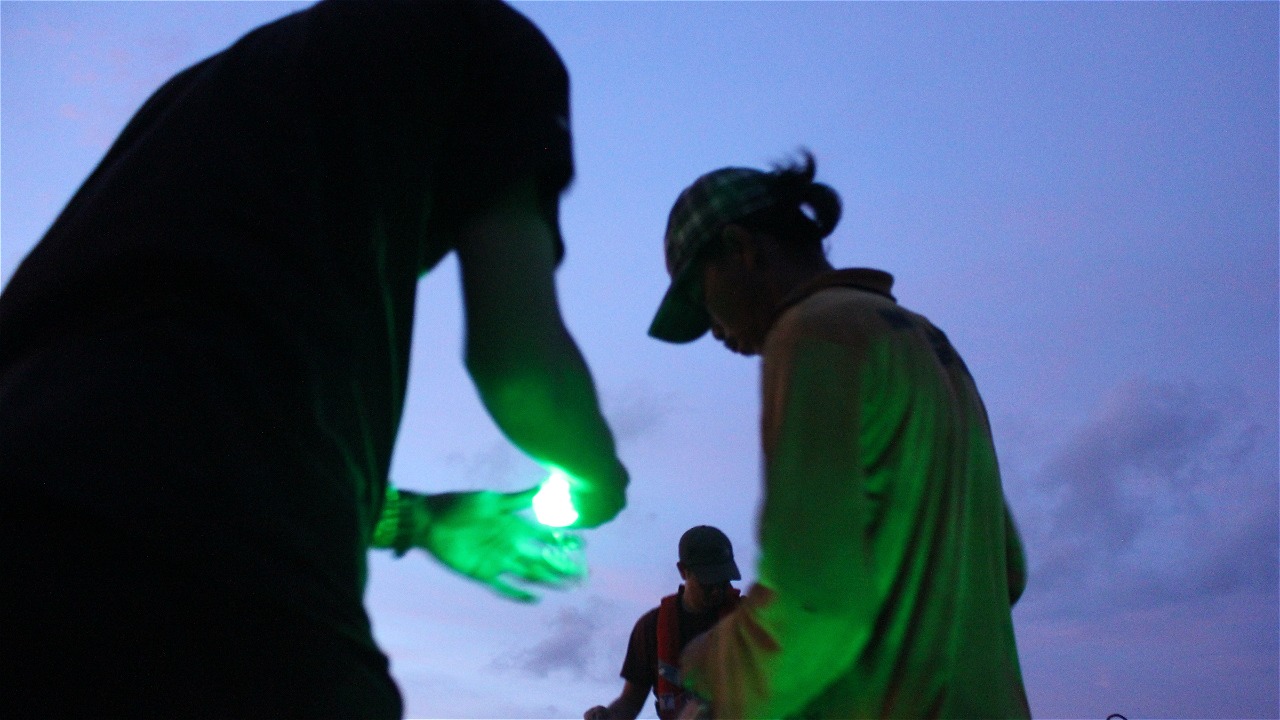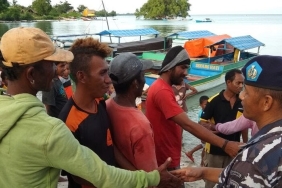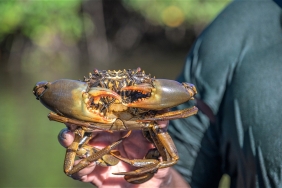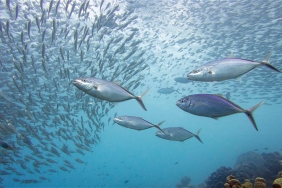PALOH FISHERMEN INSTALL GREEN LED LIGHTS IN NETS, TURTLE BYCATCH DROPS 61%
By: Darwan Saputra (Fisheries Bycatch Improvement Program, WWF-Indonesia)
The loading and unloading activities of drift gillnet vessels at Liku Harbor, Sebubus Village, Paloh District can be found from morning to evening every day. The process of buying and selling fish, loading fuel, rations and ice is quite crowded at the port. The number of fleets that can reach 50 units of fishing boats can be anchored in this place when the season of waves and strong winds makes it impossible for fishermen to go to sea.
Unlike the activities of other fishermen, for the past 3 days, one of the drift gillnet fishermen, who is familiarly called Pak Pendi, has been busy with his boat. The cleaning process he does starts from repairing damaged nets, polishing the ship's body which at some points has a small leak, and repainting the ship which is usually done every 3 months. In order to maintain the durability of the ship and its millik fishing gear.
"This drift gill net has a net length that can reach 1.5 nautical miles, the mesh size is 8 inches, and white pomfret is my main target catch," said Pak Pendi. With a fishing trip length of 3-5 days, in addition to white pomfret as a target, Pak Pendi told me about the frequent occurrence of several types of sea turtles caught by accident.
"In fact, almost every trip, there is interaction with these protected biota," he said. As one of the pilot fishermen in Sebubus Village, Pak Pendi often handles sea turtles on the boat according to the Better Management Practices (BMP) for Handling Sea Turtles as By-Catch (Bycatch) socialized by WWF-Indonesia.
From WWF-Indonesia's data, bycatch or bycatch has been identified in Paloh Waters since 2013 - 2017 with an average bycatch ranging from 720-1152 turtles in the pomfret gillnet fishery.
WWF-Indonesia has made efforts to assist the handling of bycatch of turtles caught accidentally by targeting fishermen in Pontianak to around Paloh, West Kalimantan.
In addition to assisting the handling of sea turtle bycatch, WWF-Indonesia also introduced the implementation of green Light-Emitting Diode (LED) lights in fishermen's gill net fishing gear in Paloh waters. The trial installation of LED lights on fishermen's gill nets in Paloh has been carried out from 2014 to 2017. The green LED light trial was conducted on monofilament-based gill nets with 8-inch meshes installed at every 10-meter distance that had been marked.
Usually fishermen spread the net in the afternoon at 4:30 pm and lift the net at 2:00 am depending on the fishing location and weather, for about 10 hours the net is left in the water. This green LED light is to avoid direct contact with the turtle's bycatch on fishing gear (API).
The goal, among others, is to reduce the threat to the survival of sea turtle populations in the Paloh water area, which is one of the nesting beaches and important habitats for several types of sea turtles. In terms of the Green LED light trial, the ETP turtle biota interaction has decreased significantly and often several pomfret are entangled in the net area fitted with green LED lights.
"The green light produced by the LED lights can be detected by the turtles so that the animals move away or change their swimming direction and will not be entangled by the gillnet," explained Dwi Ariyogagautama, Bycatch & Shark Conservation Coordinator, WWF-Indonesia.
From 69 paired trips during 1 season, which initially the range of bycatch reached 720-1152 turtles, the reduction in bycatch reached 61.4%. The catch of pomfret target fish also increased by 11.6% and the benefit from fish sales reached 14.3%.
"Hopefully, this LED light installation program can continue, so that more fishermen can try it and feel the benefits, both from the catch and the reduction of turtles caught accidentally," said Pak Pendi.





